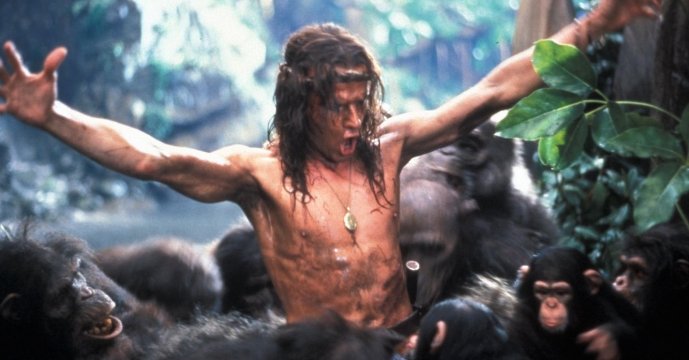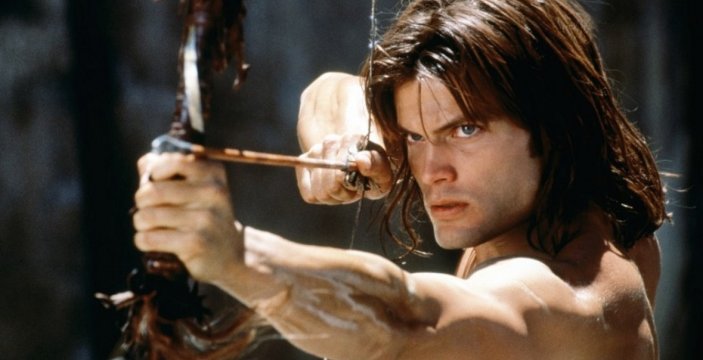Tarzan
PLANET OF THE APE-MAN
Empire, Issue #279, September 2012
Owen Williams Blog ~ Posted on 27/08/2014This is a feature I wrote for Empire a couple of years ago, for the centenary of Edgar Rice Burroughs’ Tarzan of the Apes. It begins with a visit to the set of the CG animated Tarzan starring Kellan Lutz, which was finally released earlier this year, and then continues as a history of the character (mostly on screen) from his inception to the present day. The final paragraphs mention a big developing Tarzan project at Warner Bros. That film is now in production, with Alexander Skarsgård as Tarzan, a screenplay by Adam Cozad, and David Yates directing.
Read the entire article at:
http://creatureofthewheel.wordpress.com/2014/08/27/tarzan/
“Well, I don’t see what’s so funny,” huffs Kellan Lutz with mock affront, as Empire points at him and laughs. The reason for our mirth is the fetching grey one-piece performance capture jumpsuit that Lutz is forced to wear on the Munich set of Constantin Films’ new animated Tarzan. Joking aside though, it’s actually a significant moment. Lutz’ Tarzan will land during the centenary celebrations for Edgar Rice Burroughs’ most famous creation, and despite its digitally-rendered end-point, it marks the first time an actor has worn a costume and played the lord of the jungle on a set for fifteen years. “I feel honoured,” Lutz beams. “I grew up on a farm in the mid-west, and I loved playing pirates and firemen, but I always loved playing Tarzan too. It’s a dream come true to play him in a film… even if he won’t have my face!”
Every generation gets a new cinematic Sherlock Holmes, a new Batman, a new James Bond. For decades, Tarzan was part of that pantheon of heroes, regularly rebooted and recast. In the hundred years since his inception he’s been the subject of at least 89 movies (not to mention TV series and cartoons), but only a handful of those arrived during the last thirty years. Once a phenomenon, Tarzan now almost seems an anachronism: a monosyllabic ape-man from a quaintly racist fantasy Africa, screaming his yodelly scream as he swings through the jungly tendrils in glorious black-and-white. Or perhaps your Tarzan is the one from the thirty or so novels, or the various comics, or the colour movies from the 1960s, or the Disney animation from 1999, with its kid-friendly messages of tolerance and its Phil Collins songs.
“I do presentations in schools and at festivals,” says author Andy Briggs, who’s currently writing a new series of kids’ Tarzan novels for Faber. “If you stand in a room of a hundred children, 99% of them know who Tarzan is, even though only half have seen the Disney film, and then fewer than 5% of them might have read a Disney tie-in Tarzan book. They all know that Tarzan lives in the jungle and was raised by apes, and they all know the Johnny Weissmuller roar. If you ask them how they know all that, they all shrug. They just do!” Through some kind of cultural osmosis, Tarzan is still with us. But where’s he been, and can he successfully come back?
Tarzan of the Apes, as the approaching centenary suggests, was first published in 1912, serialised in the pulp All-Story Magazine (it was collected as a single-volume novel two years later). He was Edgar Rice Burroughs’ second great creation following John Carter, and like Carter, his immediate attraction for contemporary audiences was an almost impossibly exotic location. The jungles of Africa may technically have been closer to home than the deserts of Mars, but were still vastly beyond the travel capability of almost anyone, and remained unexplored enough to believably contain endless lost cities and undiscovered races. Arriving only thirteen years after Joseph Conrad’s Heart of Darkness, Tarzan of the Apes is obviously a very different book, but it’s arguably dealing with that same horror and fascination regarding what it might mean to “go native”. Burroughs’ own cheerful ignorance of the region led to his populating his dense jungle with various species that prefer open plains, and with giant apes that don’t exist at all.
Burroughs himself had hit on a career as a pulp writer at the age of 37, following a stint in the military and a series of hapless business ventures. “He was a very poor businessman!” laughs James Sullos, the president of rights-holders Edgar Rice Burroughs Incorporated. “He tried dozens of different enterprises, and at the time he wrote John Carter and Tarzan he was a pencil-sharpener salesman. He had a team of people going door-to-door – pencil-sharpeners were a hot commodity in those days! – and he had nothing but time on his hands because he was just sitting in his office waiting for his staff to bring the orders back.”
Burroughs passed the downtime in his office reading pulp fiction, and concluded that, “if people were paid for writing rot such as I read in some of those magazines, I could write stories just as rotten! Although I had never written a story, I knew absolutely that I could write stories a whole lot more entertaining…”
“Ironically, after that, he became a very astute businessman,” says Sullos. “All of his business moves after that point were pretty smart. Before that he couldn’t do anything right!
Burroughs became one of the very first authors to actively protect his name and work in the corporate environment, creating the corporation of which Sullos is president as early as 1923, the better to control how his work was adapted. Unimpressed with the early, silent-movie attempts to bring Tarzan to the screen (the first Tarzan film, starring stocky former Arkansas lawman Elmo Lincoln, came out in 1918), Burroughs sought to find studios that would allow him creative control over future film projects, but he found it a tough sell.
“By the time the MGM films came along,” says author and Tarzan expert Scott Tracy Griffin, “Burroughs was growing a little detached from it all. He just sold them the Tarzan name and said, ‘Make up your own stories.’ As long as they kept to the core of Tarzan’s character, Burroughs allowed the films to diverge from the novels.”
The “Me Tarzan, you Jane” archetype is born here (although that’s not a line that you’ll actually find in any of the films – not quite). The Tarzan of Burroughs’ stories is John Clayton, Lord Greystoke, orphaned and left alone in the African jungle as a baby. He teaches himself to read English as a child, and is taught to speak French by his discoverer, the naval officer D’Arnot, in the first novel, by the end of which he is also driving a car around Baltimore. As early as the second novel, The Return of Tarzan (1913), he’s working as an agent for the French in pre-WWI Algeria. He’s “an ape-man with the heart and head and body of an English gentleman, and the training of a wild beast”; “a god-like white man tanned to a dusky brown, with the strength of a wild elephant, the agility of a monkey, and the bravery of a lion.” He is also, in his own words, “the killer of beasts and many black men,” but he becomes more civilised as the novels progress.
In the MGM movies though, he’s champion swimmer Johnny Weissmuller, never named anything other than Tarzan and never actually given an origin. He is, instead, the mysterious and legendary “Great White Ape” that James Parker (C. Aubrey Smith) and his feisty daughter Jane (Maureen O’Sullivan) encounter on their expedition to find the mythical Elephants’ Graveyard, in Tarzan, The Ape Man (1932). “Weissmuller was extraordinary looking,” says director Hugh Hudson, a child of the 1930s who would make a rather different Tarzan in 1984’s Greystoke. “Everyone knew him from the Olympic games, and you can see why he was given the job: he had an incredible physique.” That physical stamp would endure: for the next fifty years Tarzan would almost always be played be athletes rather than actors. No less easy on the eye was O’Sullivan, whose string bikini and nude swimming (although the swimmer was actually her body-double) in first sequel Tarzan and His Mate (1934), led to a swift, outraged change in the American production codes.
Weissmuller fought dangerous animals, ferocious savages and rapacious white men in a dozen films. His immediately recognisable yell was created artificially by a sound engineer, although Weissmuller later learned to do a good approximation of it for real, and it remains Tarzan’s strongest signifying characteristic in the popular imagination. “That’s my Tarzan,” says Briggs. “My favourite film ever is Raiders of the Lost Ark – that’s my apex of perfection – but I think Tarzan Triumphs (1943) is a close second. ‘Now Tarzan make war!’ That, to me, is Tarzan. Tarzan versus the Nazis: what more could you possibly want?” The films also had an oddly domestic set-up though, with Tarzan and Jane living happily together in a jungle tree house – complete with kitchen for Jane – with frequent comic relief from Cheetah the chimpanzee. Tarzan and Jane gained a son, Boy, in 1939, although due to their shocking failure to get married, production codes dictated that Boy should be found and adopted rather than conceived by the wild couple.
The 1930s and 40s were Tarzan’s real heyday, with an explosion of often competing film projects, thanks to the incorrigible Burroughs’ often shonky rights dealings. Burroughs had optioned the Tarzan rights to MGM believing that a previous contract with a now-bankrupt company was no longer valid. That turned out not to be the case however, when that old contract found its way into the hands of producer Sol Lesser, who had it legally declared a still officially going concern, and put his own Tarzan the Fearless serial into production whilst MGM were still shooting Tarzan, The Ape Man. Another swimmer, Buster Crabbe, was Lesser’s Tarzan first time out, and he was replaced by Olympic decathlete Glenn Morris in Lesser’s follow-up Tarzan’s Revenge. The enthusiastic Lesser took over the “official” Weissmuller series in 1943, taking it to RKO after MGM relinquished its rights. He continued to produce Tarzan films until his retirement in 1958.
Burroughs also got personally involved in a further competing film serial, the stunningly inept New Adventures of Tarzan, in 1935, starring Olympic shot-putter Herman Brix. “Burroughs underwrote it financially, and it was really an honest attempt to show his more articulate Tarzan,” explains Griffin, “but like a lot of business start-ups they were underfunded. There were tropical storms and horrible weather and injuries and disease… They didn’t know what they were getting into, and it fell short of the mark.” Burroughs would work out his exasperation with Hollywood in his novel Tarzan and The Lion Man (1935), a weirdly meta, self-parodying affair in which a film crew gets in the middle of a mad-scientist’s plot in Africa, and Tarzan auditions for a role as himself and is told he isn’t suitable. He stayed away from the films thereafter, but continued to write Tarzan novels – 24 in total – until his death in 1950.
Weissmuller finally hung up his loincloth after Tarzan and the Mermaids in 1948 (which has no actual mermaids in it but does include a fight with a giant octopus). The first Weissmuller films had been filled with their star’s athletic stunts, jungle settings and, whether or not they belonged there, dangerous beasts and expendable natives. By the time the by now rather paunchy Weissmuller left however, the films were looking tired, but they plodded cheaply on under Sol Lesser’s aegis at RKO, with Lex Barker until 1953, and then with Gordon Scott until 1960.
Scott’s tenure, while not reaching the giddily successful heights of the Weissmuller era, nevertheless saw the biggest shake-up in the franchise for some time. The final film of Sol Lesser’s series was Tarzan’s Fight For Life (1958), Scott’s third film as the ape-man and only the second of the series to be shot and released in colour. When Lesser retired, the Tarzan film rights were picked up by producer Sy Weintraub, and while he kept Scott, he immediately began making changes. His Tarzan films would eschew studio sets and be filmed on actual locations (although there’d still be clunky use of stock footage for some of the more challenging animal shots). His Tarzan would generally be a loner; these films don’t tend to have Jane in them. And fundamentally, the new Tarzan would be educated. No explanations are given, but somewhere in between Fight For Life and Tarzan’s Greatest Adventure (1959), Tarzan learns to speak fluent English, and stops referring to himself in the third person.
“Weintraub made a more adult, gritty Tarzan,” says Griffin. “His initial films were very much jungle westerns, where you have Tarzan as the lone hero up against a gang of villains and he has to pick them off one-by-one and restore order. They were less for kids and more for everybody, and you’ll find a lot of fans today who hold the last two Gordon Scott films [Greatest Adventure and Tarzan the Magnificent (1960)] as their favourites, because they took the character seriously.” The Western analogy is particularly apt, given that the films started to use famous Western actors like Woody Strode and Al Mulock. Post-Tarzan, Scott would himself decamp to Italy and make a couple of spaghettis.
Greatest Adventure is also notable for its villains: a seriously intense Anthony Quayle as the violent diamond hunter Slade, and a then-unknown Sean Connery as his insubordinate henchman O’Bannion. Connery was actually being groomed to replace Scott in the loincloth in future movies. “It was almost a done deal,” reveals Sullos, “but in between the films he went and tried out for this little spy thriller…” Tarzan lost Connery to Bond, but the Tarzan films would develop an interesting relationship with the world-conquering franchise as the ‘60s progressed.
“In Tarzan and the Valley of Gold (1966, starring American footballer Mike Henry, later the dumbass Junior in the Smokey and the Bandit films), we have a very James Bond Tarzan,” chuckles Griffin. “He arrives in a helicopter with brylcreemed hair and a tropical suit. You have the megalomaniac villain and his weird henchman, with a base in the Andes surrounded by fog and invisible to satellite. [Renowned fantasy author] Fritz Leiber wrote the novelisation [the first official post-Burroughs Tarzan book], and it really reads like Ian Fleming.” Valley of Gold may not quite be so political as to engage with the Cold War (even in the goofy Bond sense), but Tarzan did for a while become a globetrotting trouble-shooter of super-villains. “The grosses were good, and it was inexpensive to shoot overseas,” explains Griffin. “It all played into the international appeal.”
The Henry-starring Tarzan and the Jungle Boy (1968) marks the end of the original Tarzan series’ colossal and almost uninterrupted 36-year run. Weintraub produced an NBC television series starring Ron Ely between 1966 and 1968, but while it was popular, it was cancelled after two seasons for being too expensive to keep going. Weintraub and Tarzan parted company at this point, and there followed more than a decade of development hell as the property passed to Warner Bros.
Robert Towne began work on the screenplay that would become 1984’s Greystoke: The Legend of Tarzan, Lord of the Apes, in the early ‘70s. Intending to faithfully adapt, but also correct Burroughs’ original 1912 novel, he set about replacing geographically suspect lions with indigenous leopards, and gorillas with giant mandrill baboons. He meant to direct the film himself, but lost the opportunity following the failure of his behind-camera debut Personal Best, and his screenplay remained unfinished until it was taken over by Hugh Hudson.
“Towne’s screenplay finished at the trading post [where Tarzan is taken by D’Arnot en route back to England],” Hudson tells Empire, “but it was indicated where it might go with a scene breakdown. I had to write the civilisation part, shorten the jungle part and structure a film of two hours; Towne’s film would have been three hours, although he wouldn’t have been allowed to do that, of course. He’s a wonderful writer, but he gave his dog his credit on the film. That’s the only time a dog has ever been nominated for an Oscar!”
The choppy waters leading to Greystoke had been further muddied in 1981, by the Bo Derek-starring Tarzan, The Ape Man. MGM retained remake rights to the Elephants’ Graveyard storyline, meaning they could make a Tarzan film any time they liked, as long as it was always that one. Given a three-picture, anything-she-wanted deal following the breakout success of 10, Derek chose this, much to the displeasure of the powerless Burroughs estate. Maureen O’Sullivan’s Jane was a significant presence in the early Weissmuller films – she even gets her own jungle call, which sounds kind of like an opera singer being strangled – and was not, as we’ve noted, averse to showing some thigh, so a film focused on Jane in that way wasn’t without precedent and needn’t necessarily have been a disaster. The first half hour, replete with scenes of a slumming-it Richard Harris being shouty in the jungle, is actually good fun. It’s only when Tarzan shows up that things start to slide. Miles O’Keeffe, a stunt-double promoted to lead after Lee Canalito was let go, is a physically impressive Tarzan, but his fascination with Derek’s boobs can’t help but prompt unfortunate comparisons with Terry Scott’s “Ug” in Carry On Up the Jungle, released eleven years earlier. The film’s reputation as a bomb isn’t borne out by its box office, but chuckles Sullos, “It was just all about Bo and her loveliness. We don’t put that one on our list of the great Tarzan movies…”
Hudson then, had the task of making Tarzan serious, rescuing him from kids’ matinees and softcore nonsense. It might not have been the follow-up you’d have expected to Chariots of Fire, but, says the director, “My films seem to quite often be about those kinds of people who are from an establishment, and who don’t want to have anything to do with it. I wanted to construct a film about this aristocrat of the jungle – the lord of the apes – having to come to terms with what civilisation is all about, and discovering it’s also a jungle in its own manner. I liked that premise.”
Christopher Lambert, whose French accent is absolutely correct for playing the literary Tarzan, was perversely cast for being recalcitrant at the auditions. “We needed to see how the actors moved,” says Hudson. “We had a big casting session with about thirty people in a Paris dance studio, and Christopher wouldn’t do it! He just sat in a corner and brooded. And that really got my attention. Then we tried some close shots and I saw this sort of funny look he had, looking into the distance, and he was actually very appealing. Then we found out he was myopic and he was focusing on a different plane!”
The film confused the Tarzan faithful by becoming an Edwardian drama of love, loss and table manners, rather than a jungle adventure, but its critical and commercial success did lead to a sequel being mooted. Hudson wasn’t interested, and again, development was protracted, but producer Stanley S. Canter did eventually get one before the cameras more than a decade later. To the casual observer, Tarzan and The Lost City (1997, with Casper Van Dien) has no relationship to Hudson’s film, but its set-up, outlined in the opening crawl, is absolutely Greystoke, and Visual Effects Supervisor Julian Parry recalls being employed by Canter to work on what he was still calling Greystoke 2.
The film was directed by Carl Schenkel, but remains little seen. “We shot it in South Africa,” Parry tells Empire, “but it just never felt big enough. I remember Stan telling me that he had to make the film that year, or his Greystoke rights would dissolve, so maybe that’s all it was ever about. It certainly wasn’t the visceral follow-up to Greystoke that I’d imagined. In our minds we had thick vegetation, but most of our locations seemed very barren: real savannah. The pyramid at the end was supposed to be a whole, grand city; there should have been more animals… It falls short in so many ways. I remember asking an executive how the opening had gone, and he said, ‘Yeah, best not put that one on your CV.’ It didn’t have any studio support at all.” Hudson didn’t even know it existed until Empire told him.
Our final sight of a live-action Tarzan then, was Van Dien swinging out of his tree house with his Jane (Jane March) on his back… and the rest – discounting Disney – is silence. Back in Munich, director Reinhard Klooss and Constantin’s Martin Moszkowicz, remain confident that Tarzan can be made relevant again, but not without some significant changes.
“Some stories are so good that they keep on being retold,” Moszkowicz tells Empire. “The big trick is to put a twist on it that makes it relatable to modern and young audiences. I don’t think Tarzan is out-of-date just because he’s been around for a long time. There are a lot of examples of cinematic characters that have been around forever and have been re-done and re-done. But of course there is a transition that goes on. This is not the traditional Edgar Rice Burroughs – we’re doing a modern adaptation.”
“Tarzan’s the world’s first eco-warrior,” says Andy Briggs, whose books have also taken a modernising tack. “He’s the icon of preservation – just underneath the panda I suppose! – but the thing is he’s not a flag-waving liberal. He’s a pure force of nature. I made Jane more kick-ass and my first villains were illegal loggers. I love the fact that Tarzan’s this huge conservationist, but he’d also kill an endangered lion as soon as look at it, if it attacked him. It’s so primal. I wanted to make Tarzan slightly wilder and darker than before: bipolar and aggressive, so he can laugh one minute and tear raw flesh out with his teeth the next. Burroughs made him an English lord, but I like the Tarzan that is sub-Weissmuller.”
Rather than ecologist or conservationist, Sullos prefers to think of Tarzan as a survivalist, but he puts Tarzan’s drift from popularity down to just that change in what we regard as heroic. “It goes back to James Dean and Steve McQueen,” he believes. “In the 1930s and ‘40s, the hero was always a good-guy. Now the movie stars don’t have to shave because they’re bad and mean! Good guys like Tarzan and Roy Rogers are not quite held in the same esteem anymore.”
If clean-cut heroes have fallen by the wayside, so too – thankfully – have the political incorrectness and inherent racism of the novels and early films. But period films with modern sensibilities run the risk of seeming anachronistic, so Hudson too believes that updating Tarzan is the only way to bring him back. “You couldn’t spend the equivalent of what we spent on Greystoke on an Edwardian drama now,” he muses. “But I don’t think he’s outmoded. The first letter I got from anybody after doing Greystoke was from the chairman of Greenpeace, thanking us for the advertisement! You’d have to set up a modern Tarzan to defend his territory against a contemporary threat. You would use a political situation in Africa for example, like the oil exploitation in Nigeria, or al-Qaeda entering into Mali and trying to disrupt the Tuaregs, or the Chinese infiltration into the Congo…”
Warners however, who still own the live-action rights (which are separate from the animation rights) seem still to be leaning towards keeping Tarzan in his original setting. With the Burroughs estate denying Warners any further extensions, the studio has finally exercised its option, commissioning screenplays from both Adam Cozad (Jack Ryan: Shadow Recruit) and Craig Brewer (Hustle & Flow).
“Warners have been combining those scripts into one film,” reveals Sullos, “and I think they’re comfortable with it now, which is a good position to be in!” Directors have been attached at various stages during development – Harry Potter maestro David Yates was rumoured to be among them at one point – but have then moved on again, leaving the position vacant as we write this. “One of the scripts was set in the 1930s, and the other one was going to go back to the timeframe between 1905 and 1912,” says Sullos. “The last I heard, they had decided on the 1930s…”
“It’s not possible for their film to reach the screen before ours,” says Moszkowicz happily. “We’re already in production, in time for the centenary year. But you see, filmmakers and producers still have a fascination with Tarzan.”
Kellan Lutz and Spencer Locke at the Munich press conference for Tarzan (2013)
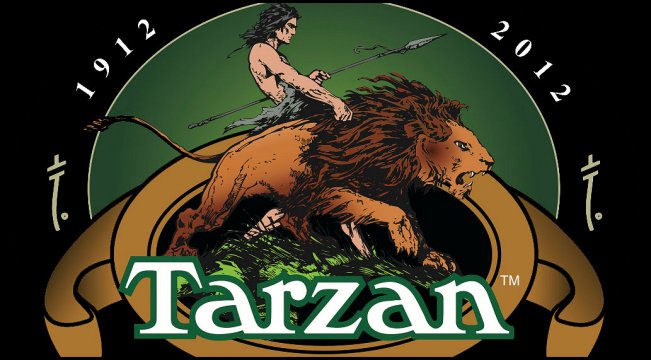
The official centennial Tarzan logo
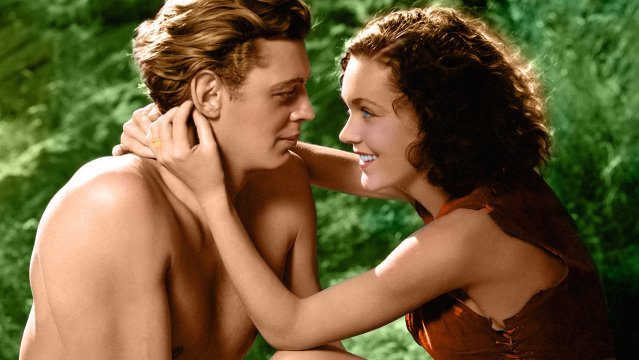
Johnny Weissmuller and Maureen O’Sullivan in Tarzan and His Mate (1934)
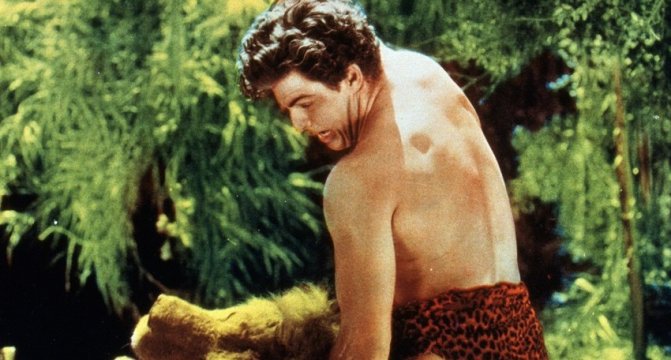
Buster Crabbe fights a stuffed lion in Tarzan the Fearless (1933)

Gordon Scott in Tarzan the Magnificent (1960)

Mike Henry in the post-Bond Tarzan and the Valley of Gold (1966)

Miles O’Keeffe and Bo Derek in Tarzan the Ape Man (1981)
